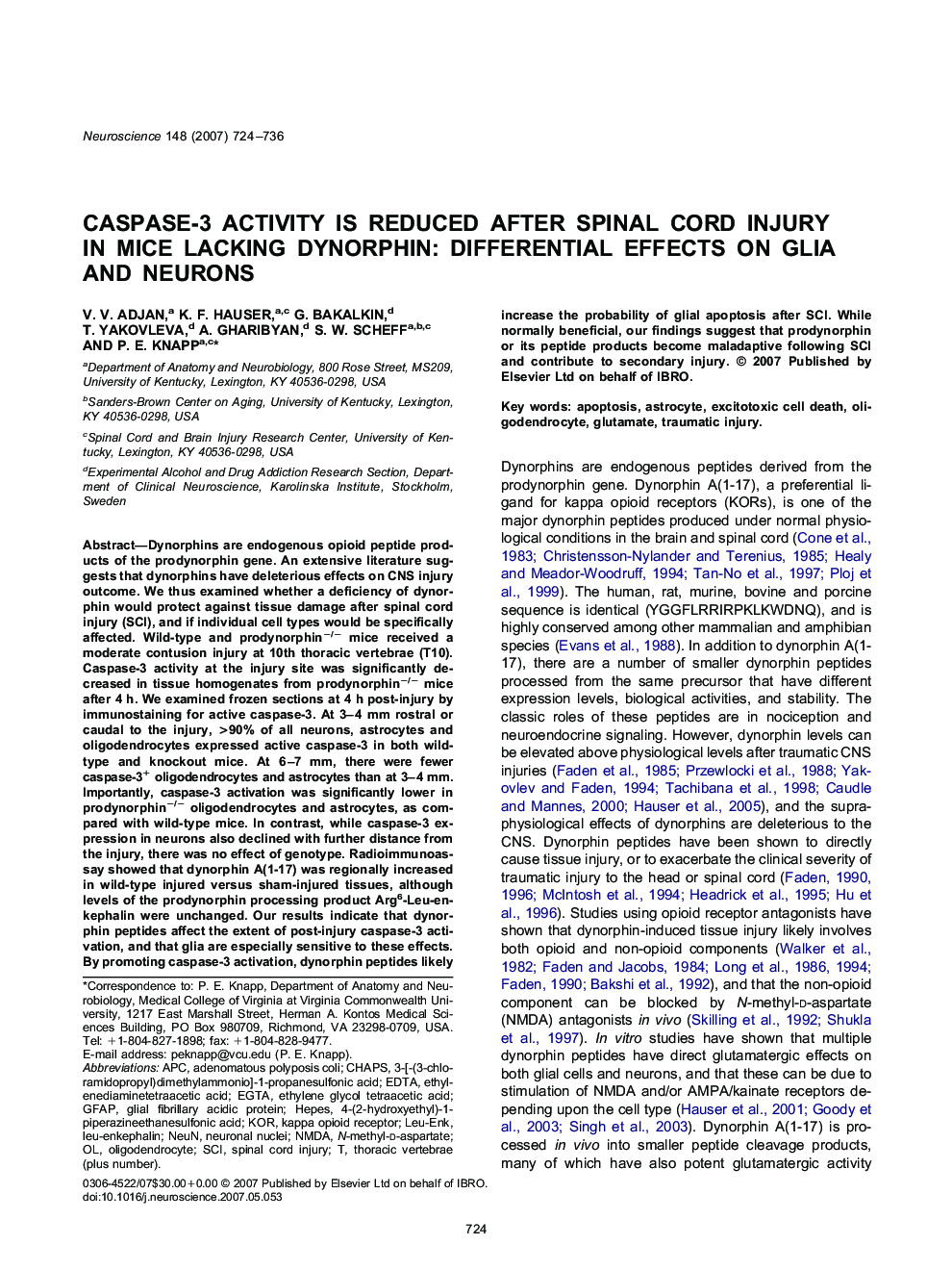| کد مقاله | کد نشریه | سال انتشار | مقاله انگلیسی | نسخه تمام متن |
|---|---|---|---|---|
| 4342579 | 1295875 | 2007 | 13 صفحه PDF | دانلود رایگان |
عنوان انگلیسی مقاله ISI
Caspase-3 activity is reduced after spinal cord injury in mice lacking dynorphin: Differential effects on glia and neurons
دانلود مقاله + سفارش ترجمه
دانلود مقاله ISI انگلیسی
رایگان برای ایرانیان
کلمات کلیدی
NeuNLeu-Enkexcitotoxic cell deathN-methyl-d-aspartateNMDAAPCEGTAHEPESGFAP4-(2-hydroxyethyl)-1-piperazineethanesulfonic acid - 4- (2-hydroxyethyl) -1-piperazineethanesulfonic acidadenomatous polyposis coli - آدنوماتوز پولیپوزیس کولی یا آدنوماتوس پولیپوزیس کولای Astrocyte - آستروسیتSpinal cord injury - آسیب نخاعیTraumatic injury - آسیب های تروماتیکEDTA - اتیلن دی آمین تترا استیک اسید ethylene glycol tetraacetic acid - اتیلن گلیکول تتراستیک اسیدEthylenediaminetetraacetic acid - اتیلینیدامین تتراستیک اسیدOligodendrocyte - الیگودندروسیتApoptosis - خزان یاختهایsci - علمیLeu-enkephalin - لئو-انکفالینneuronal nuclei - هسته های نورونیKOR - وقتیGlial fibrillary acidic protein - پروتئین اسیدی فیبریلاسیون گلایالCHAPS - چاپسglutamate - گلوتاماتkappa opioid receptor - گیرنده اپوئیدی کاپاپ
موضوعات مرتبط
علوم زیستی و بیوفناوری
علم عصب شناسی
علوم اعصاب (عمومی)
پیش نمایش صفحه اول مقاله

چکیده انگلیسی
Dynorphins are endogenous opioid peptide products of the prodynorphin gene. An extensive literature suggests that dynorphins have deleterious effects on CNS injury outcome. We thus examined whether a deficiency of dynorphin would protect against tissue damage after spinal cord injury (SCI), and if individual cell types would be specifically affected. Wild-type and prodynorphinâ/â mice received a moderate contusion injury at 10th thoracic vertebrae (T10). Caspase-3 activity at the injury site was significantly decreased in tissue homogenates from prodynorphinâ/â mice after 4 h. We examined frozen sections at 4 h post-injury by immunostaining for active caspase-3. At 3-4 mm rostral or caudal to the injury, >90% of all neurons, astrocytes and oligodendrocytes expressed active caspase-3 in both wild-type and knockout mice. At 6-7 mm, there were fewer caspase-3+ oligodendrocytes and astrocytes than at 3-4 mm. Importantly, caspase-3 activation was significantly lower in prodynorphinâ/â oligodendrocytes and astrocytes, as compared with wild-type mice. In contrast, while caspase-3 expression in neurons also declined with further distance from the injury, there was no effect of genotype. Radioimmunoassay showed that dynorphin A(1-17) was regionally increased in wild-type injured versus sham-injured tissues, although levels of the prodynorphin processing product Arg6-Leu-enkephalin were unchanged. Our results indicate that dynorphin peptides affect the extent of post-injury caspase-3 activation, and that glia are especially sensitive to these effects. By promoting caspase-3 activation, dynorphin peptides likely increase the probability of glial apoptosis after SCI. While normally beneficial, our findings suggest that prodynorphin or its peptide products become maladaptive following SCI and contribute to secondary injury.
ناشر
Database: Elsevier - ScienceDirect (ساینس دایرکت)
Journal: Neuroscience - Volume 148, Issue 3, 7 September 2007, Pages 724-736
Journal: Neuroscience - Volume 148, Issue 3, 7 September 2007, Pages 724-736
نویسندگان
V.V. Adjan, K.F. Hauser, G. Bakalkin, T. Yakovleva, A. Gharibyan, S.W. Scheff, P.E. Knapp,